Submitted by WA Contents
MBH Architects transforms former Berkeley Art Museum into Life Sciences Lab on Berkeley campus
United States Architecture News - May 04, 2022 - 13:16 3294 views
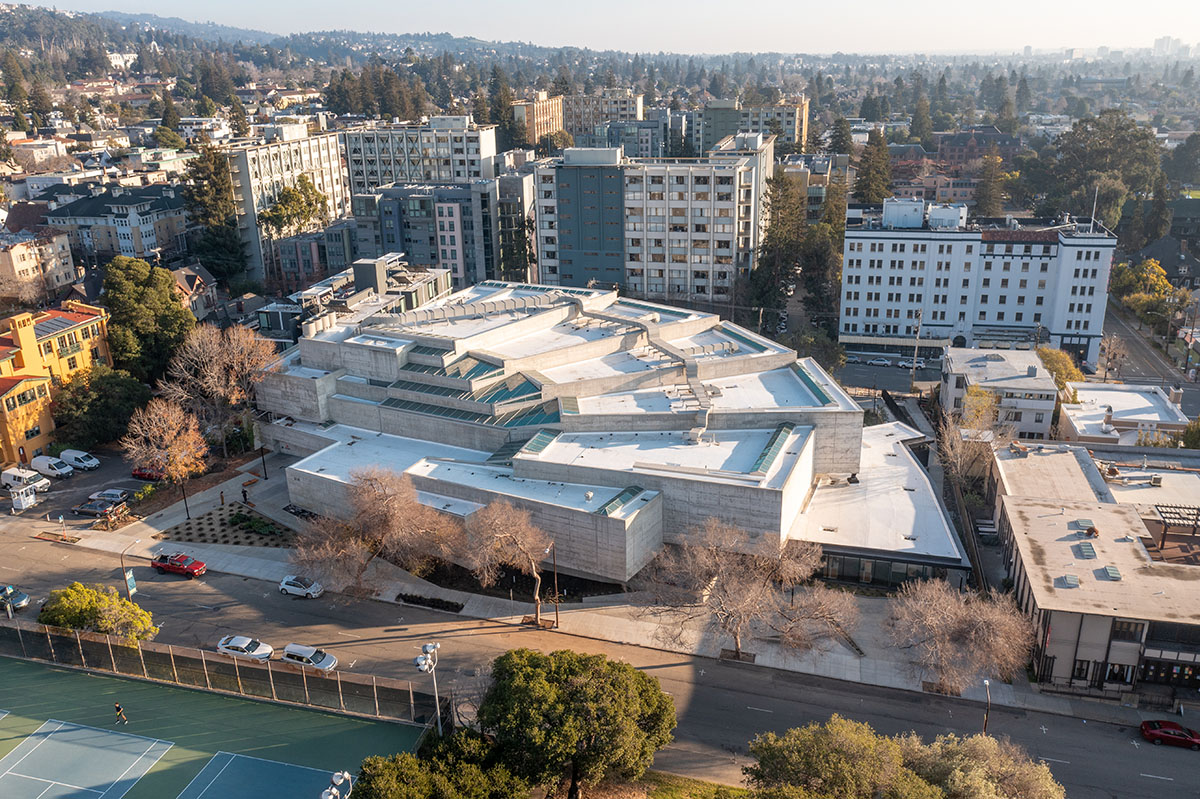
Alameda-based architecture and design firm MBH Architects has transformed the former Berkeley Art Museum and Pacific Film Archive, designed by Mario Ciampi, into a new Life Sciences Lab on the University of California, Berkeley campus.
Named Bakar BioEnginuity Hub, the original 1970 Brutalist structure has been redesigned as a new science lab by maintaining the structure's historically-significant elements.
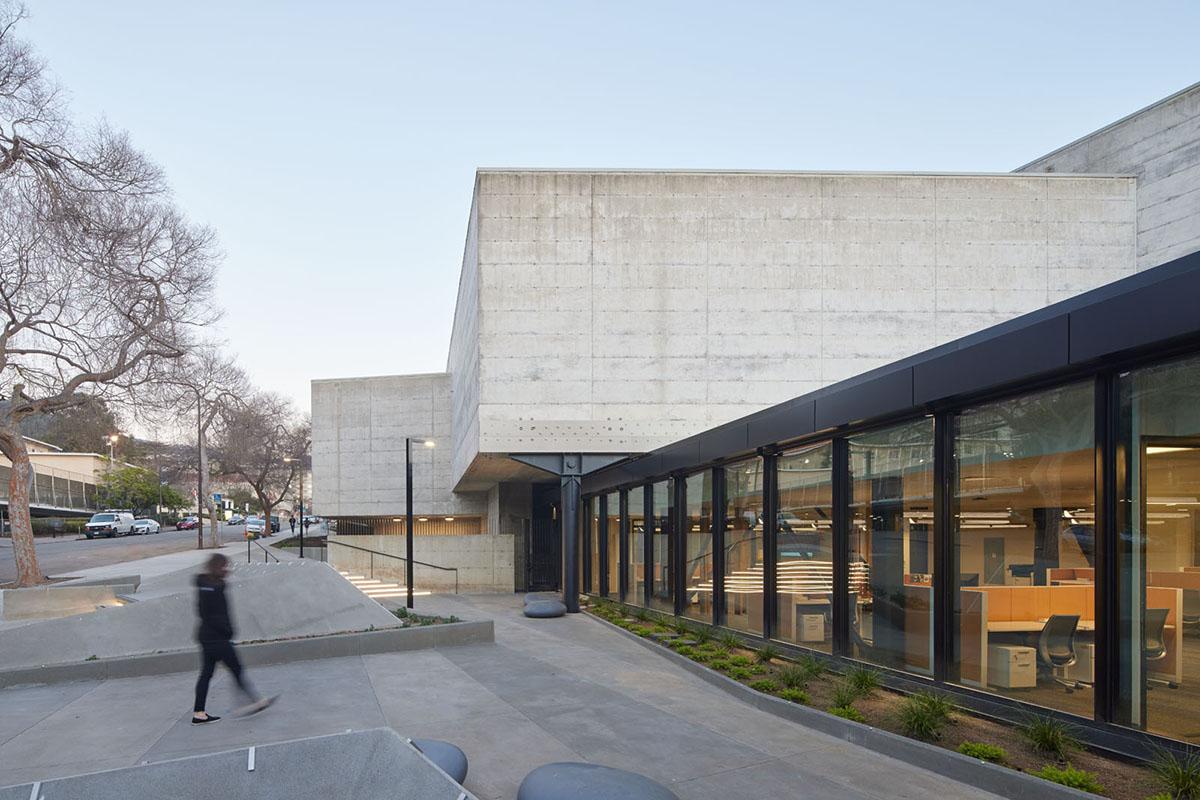
Image © Bruce Damonte
The original structure of the building is comprised of massive concrete volumes that interlock each other and placed in a cascaded form.
The studio has converted a structurally-deficient inoperable space into a modern co-working life science lab facility designed to LEED Gold standards.
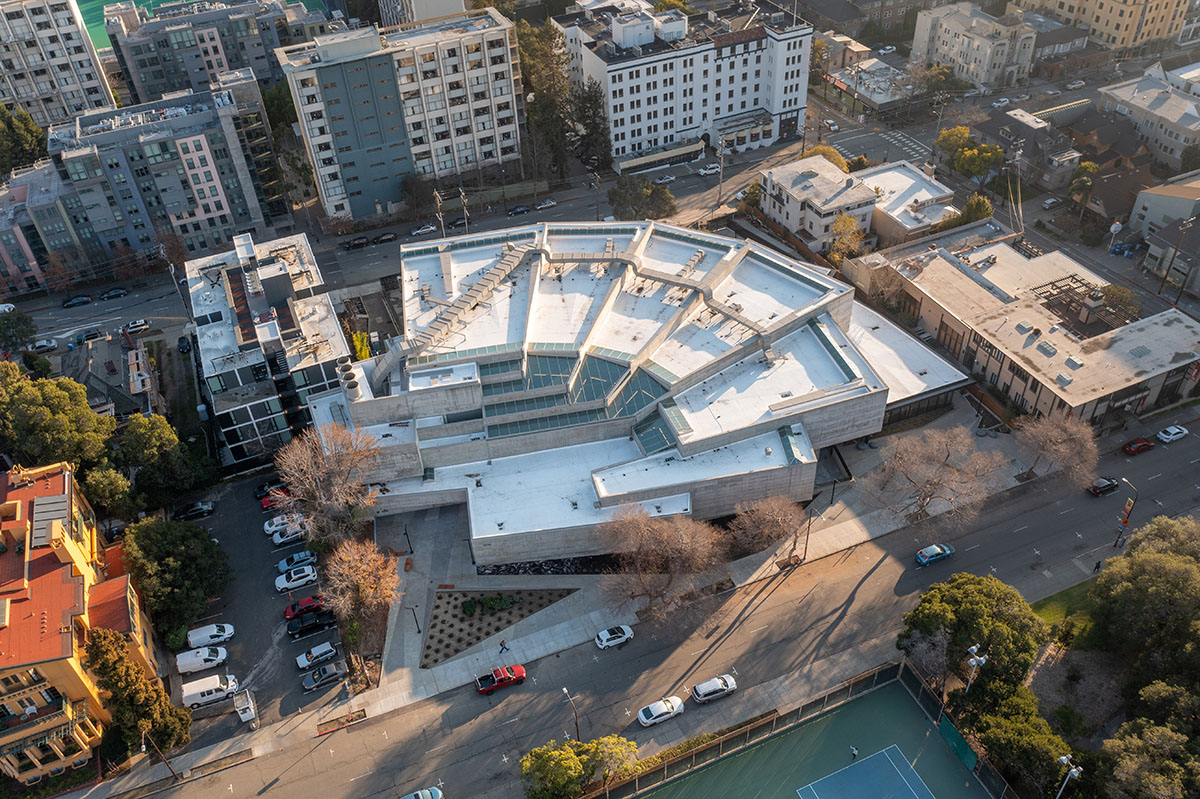
Image © Cris Gebhardt
The new design, including a glass-fronted addition and two new public plazas, repurposes and modernizes the former Berkeley Art Museum and Pacific Film Archive to today’s standards while preserving the building’s original brutalist design approach.
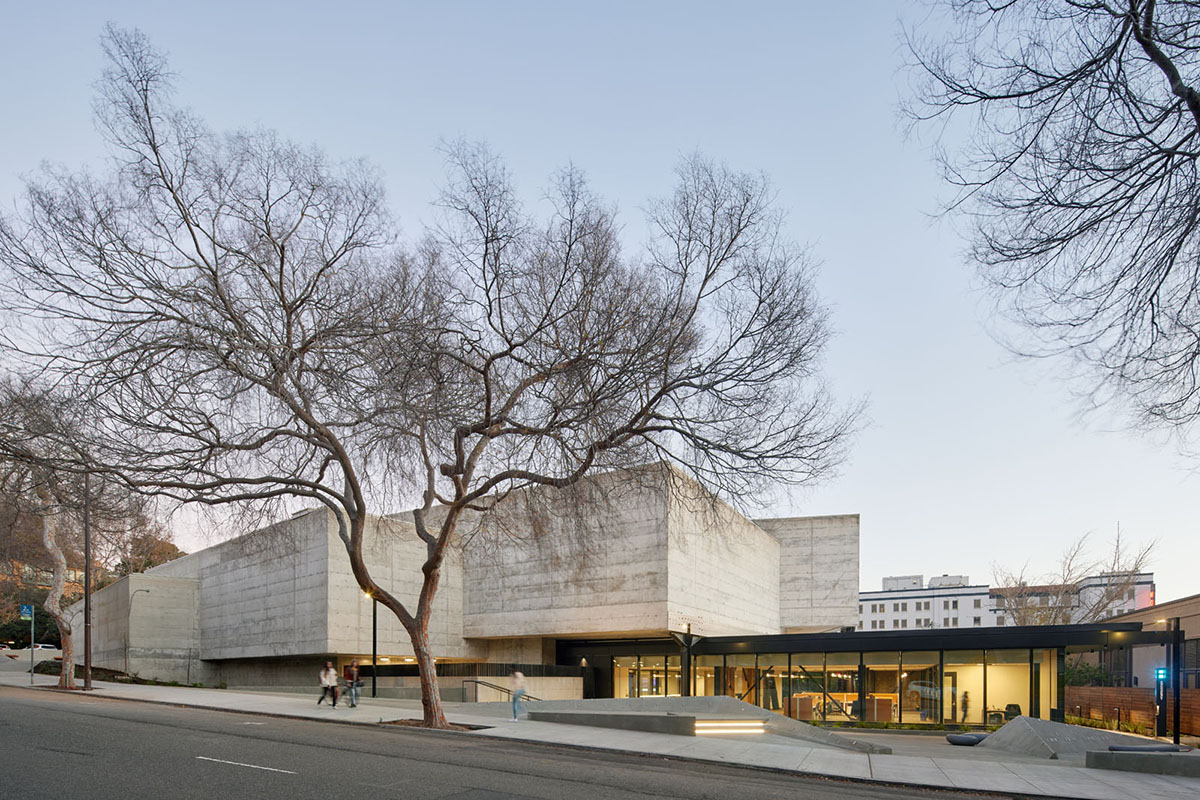
Image © Bruce Damonte
The museum was evacuated in 2014 since it was found seismically unsafe. In later stage, MBH Architects was initially commissioned to conduct a feasibility study to work on the necessary renovations needed to make the building well-suited for life science laboratories while preserving the structure’s historical significance.
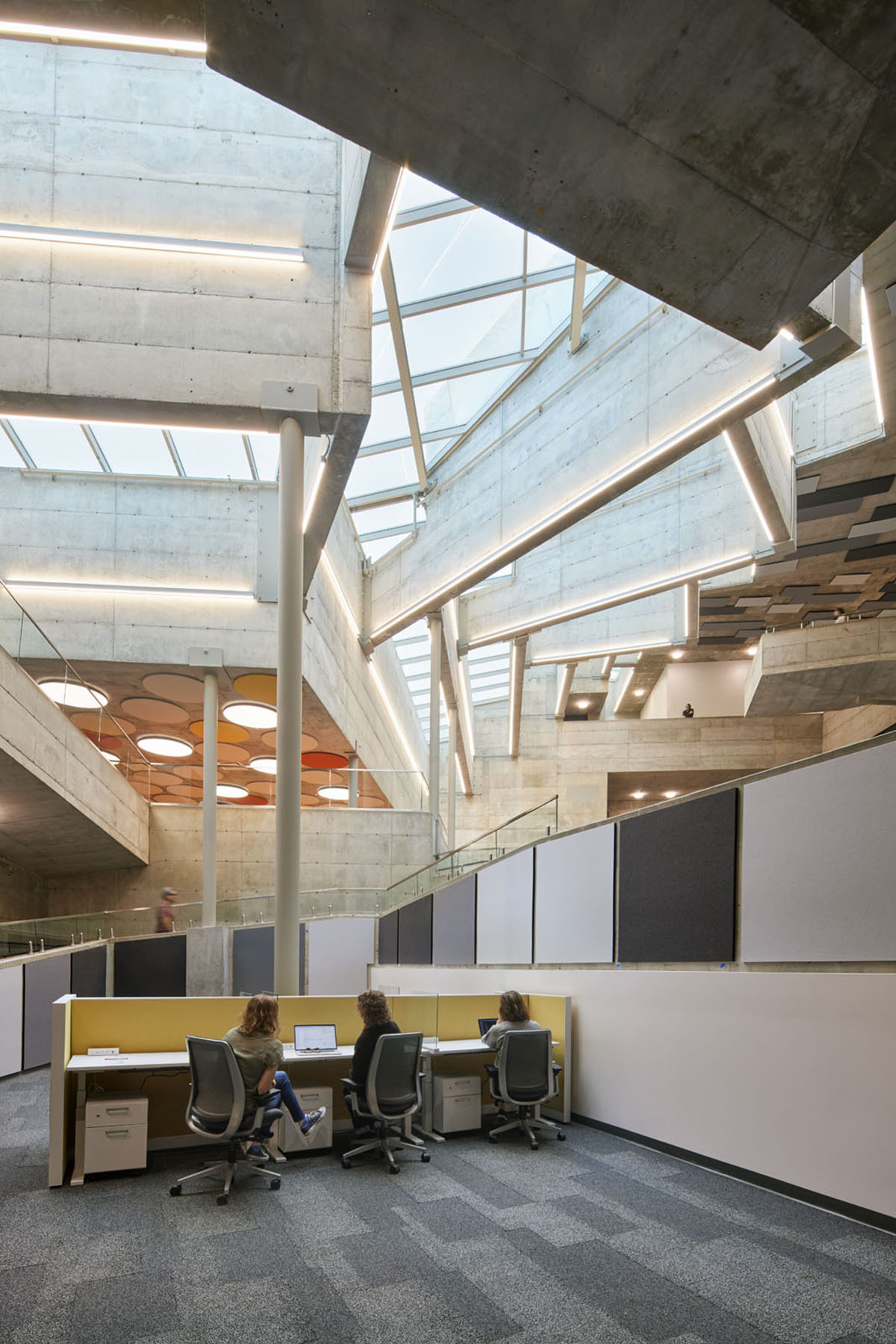
Image © Bruce Damonte
As the studio explained, during this phase, MBH identified four major challenges to renovating the structure to satisfy the life science requirements.
First, a structural upgrade needed for the performance of the structure based on the current code. Adapting a life science and co-working program to the building’s irregular geometry was another key challenge in the design process.
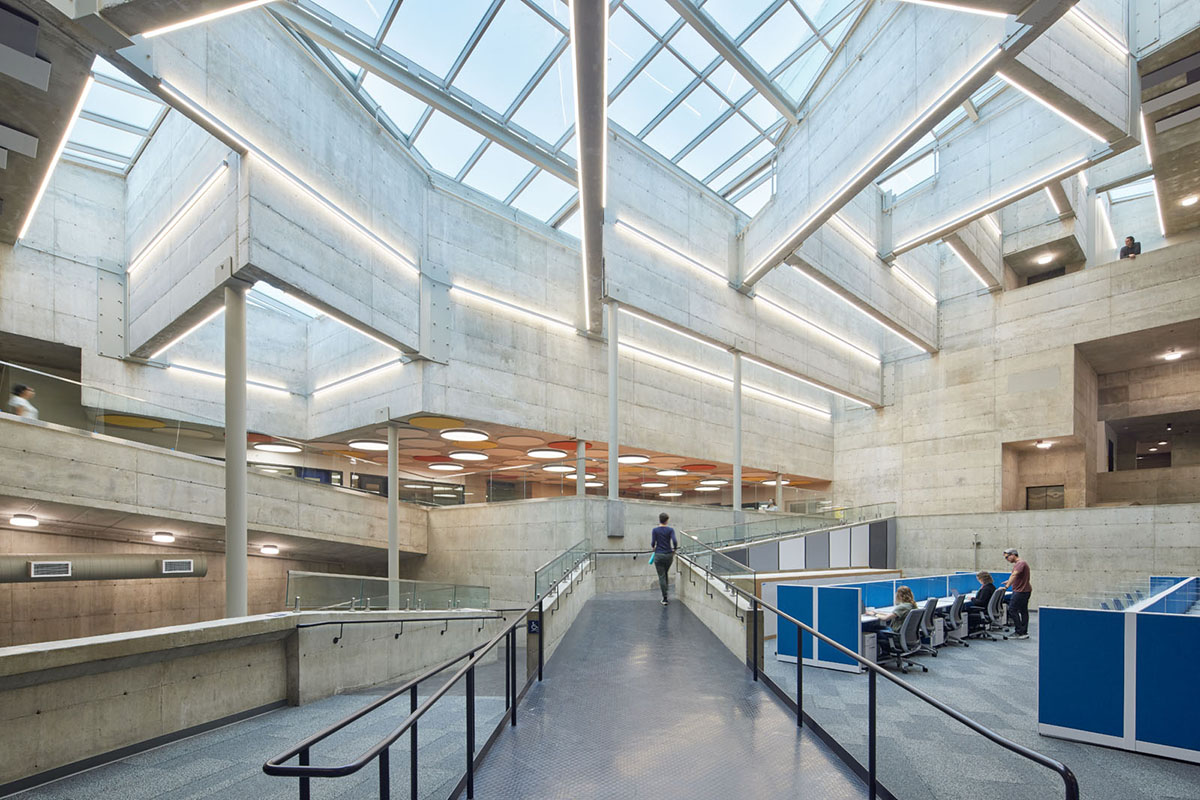
Image © Bruce Damonte
While addressing life safety, substantial mechanical modernization is another component, and the final touch was to deliver a successful performance in all necessary renovations and upgrades while preserving the building’s historical character.
Upon completion, the initiative was feasible, MBH was engaged to design the forthcoming Bakar BioEnginuity Hub.
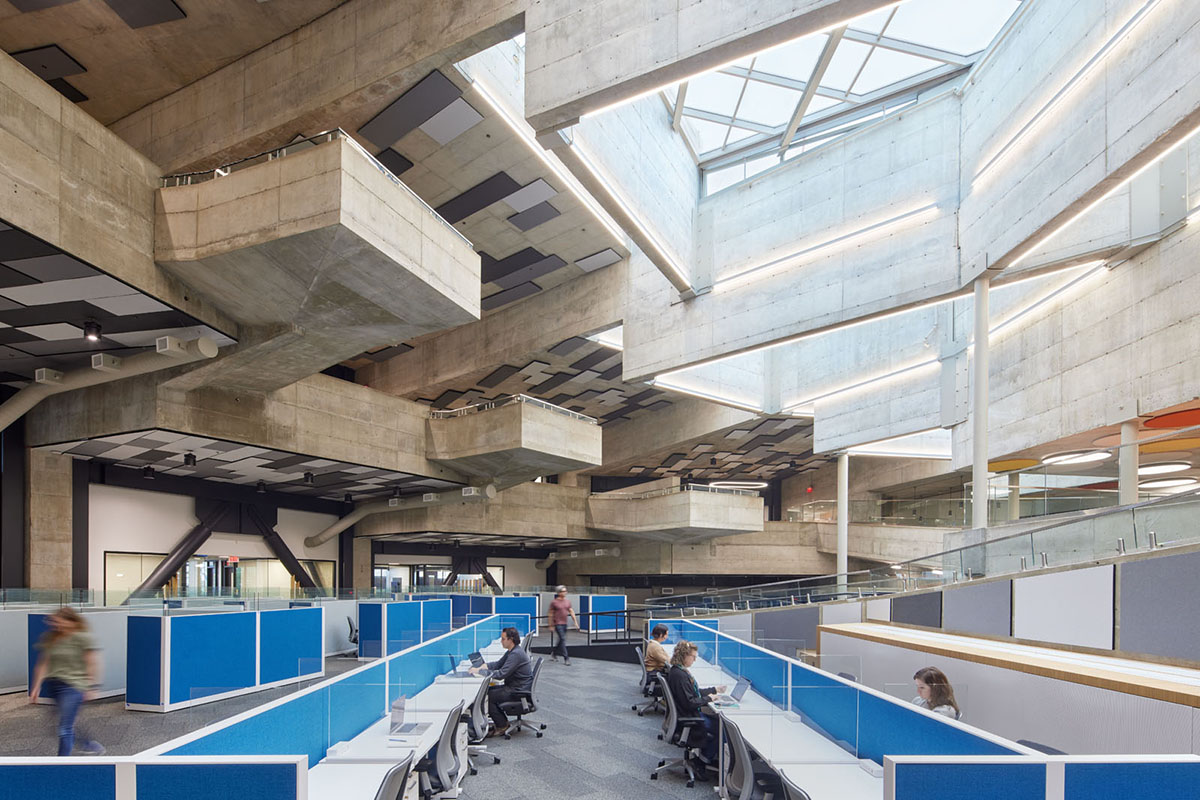
Image © Bruce Damonte
"The goal for the new use is to bridge the gap between UC graduate students, life science startups, and established biotech companies by providing well-equipped research space, which is often cost-prohibitive for young companies," said MBH Architects.
The program of the building includes a laboratory, open office areas, collaboration spaces, private offices, conference rooms, an auditorium, an undergraduate program space, terraces, and public outdoor spaces.
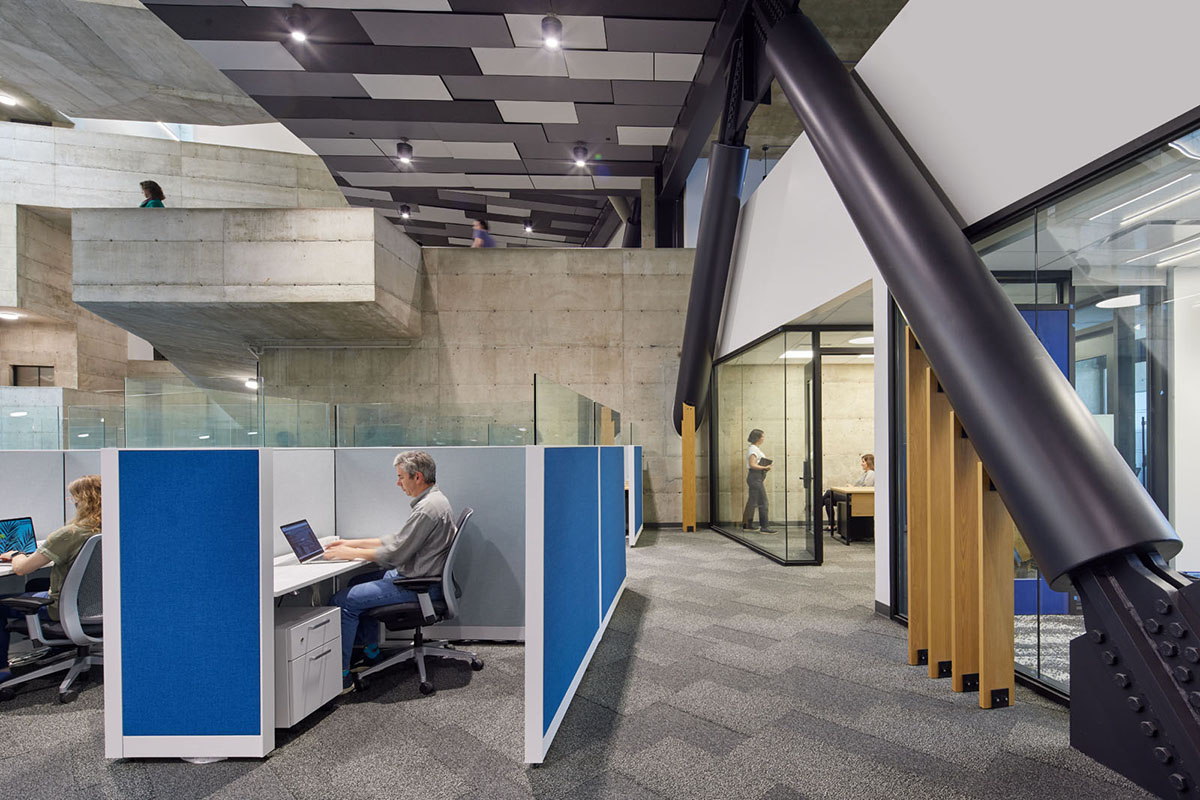
Image © Bruce Damonte
The MBH team also converted the former museum’s upper-level galleries into glass-fronted labs that overlook dramatic cantilevered ramps hanging within a sky-lit double height space.
"These ramps and other parts of the museum’s circulation system that once led visitors from gallery to gallery have been preserved and re-purposed to intentionally create interaction between groups of people who might not otherwise have an occasion to converse, furthering the university’s goal of encouraging innovation among scientists," the studio added.
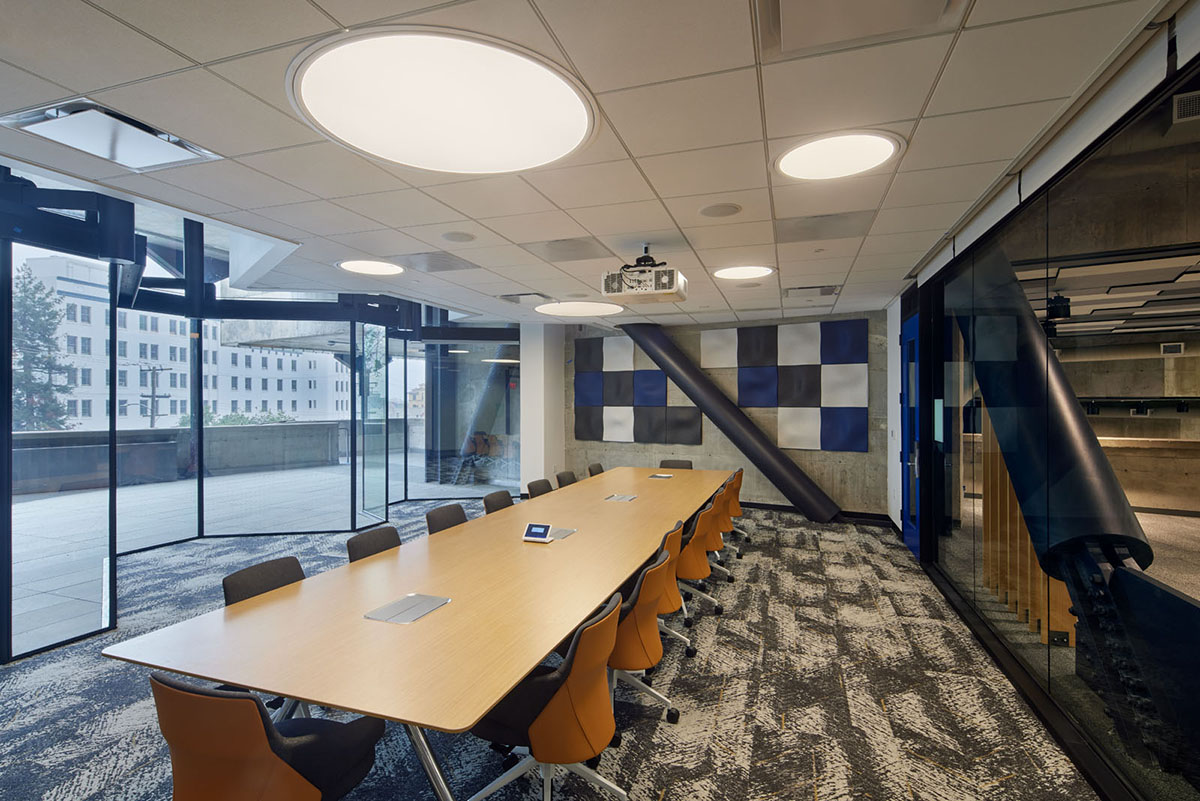
Image © Bruce Damonte
The design team wanted to challenge the often sterile-looking design of lab spaces and infused the labs with liveliness using brightly colored walls and natural light by uncovering and replacing skylights that had been covered to protect artwork from UV damage.
The materials of workspaces and common areas have been selected to create a contrast and complement the original structure and provide a welcoming environment for innovative work.
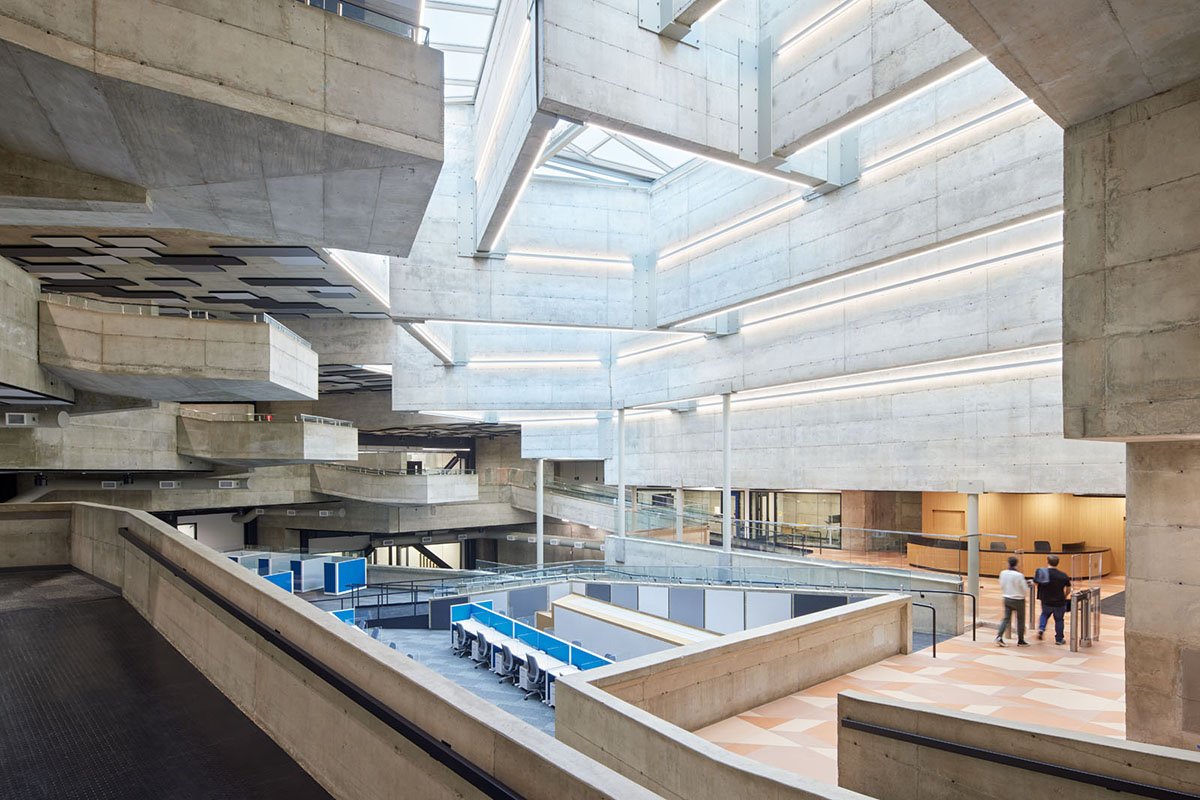
Image © Bruce Damonte
The team also emphasized that during feasibility, an additional space was required to accommodate the new use and the studio added a 6,600 square foot (613-square-metre) glass front to create a visually distinct appearance yet complementary to the original structure.
"Sitting below the lowest hanging ramp, the extension’s glass façade contrasts strikingly with the weight of the concrete above," the architects added.
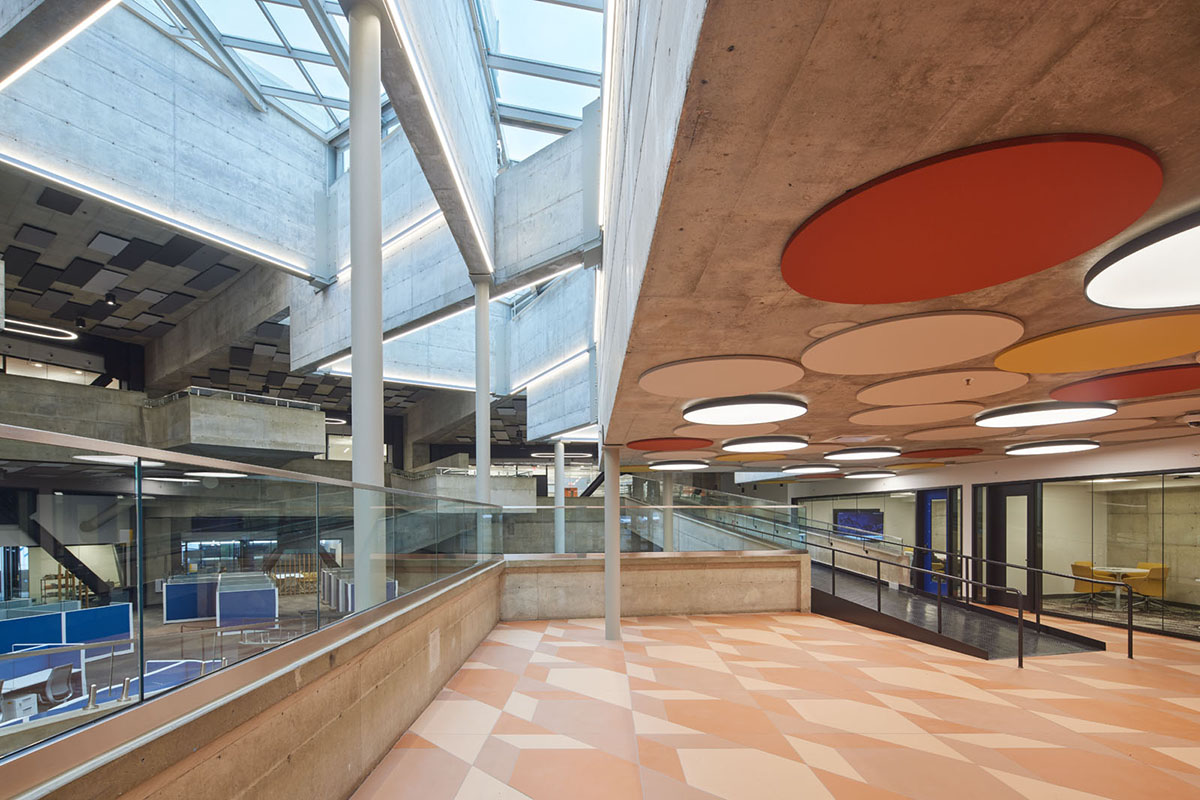
Image © Bruce Damonte
The studio upgraded historically-significant elements of the 1970 Brutalist structure with the utmost care to preserve the original character while protecting the building from future damage.
Significant issues, such as seismic performance, water intrusion, and acoustic performance, have been addressed while bringing the building up to code.
The team also renovated mechanical, electrical and plumbing infrastructure, including the replacement of existing gas service with all-electric systems, allowing the project to achieve low EUI, operational carbon neutrality and Net-Zero HVAC water-use as well as meet LEED Gold requirements.
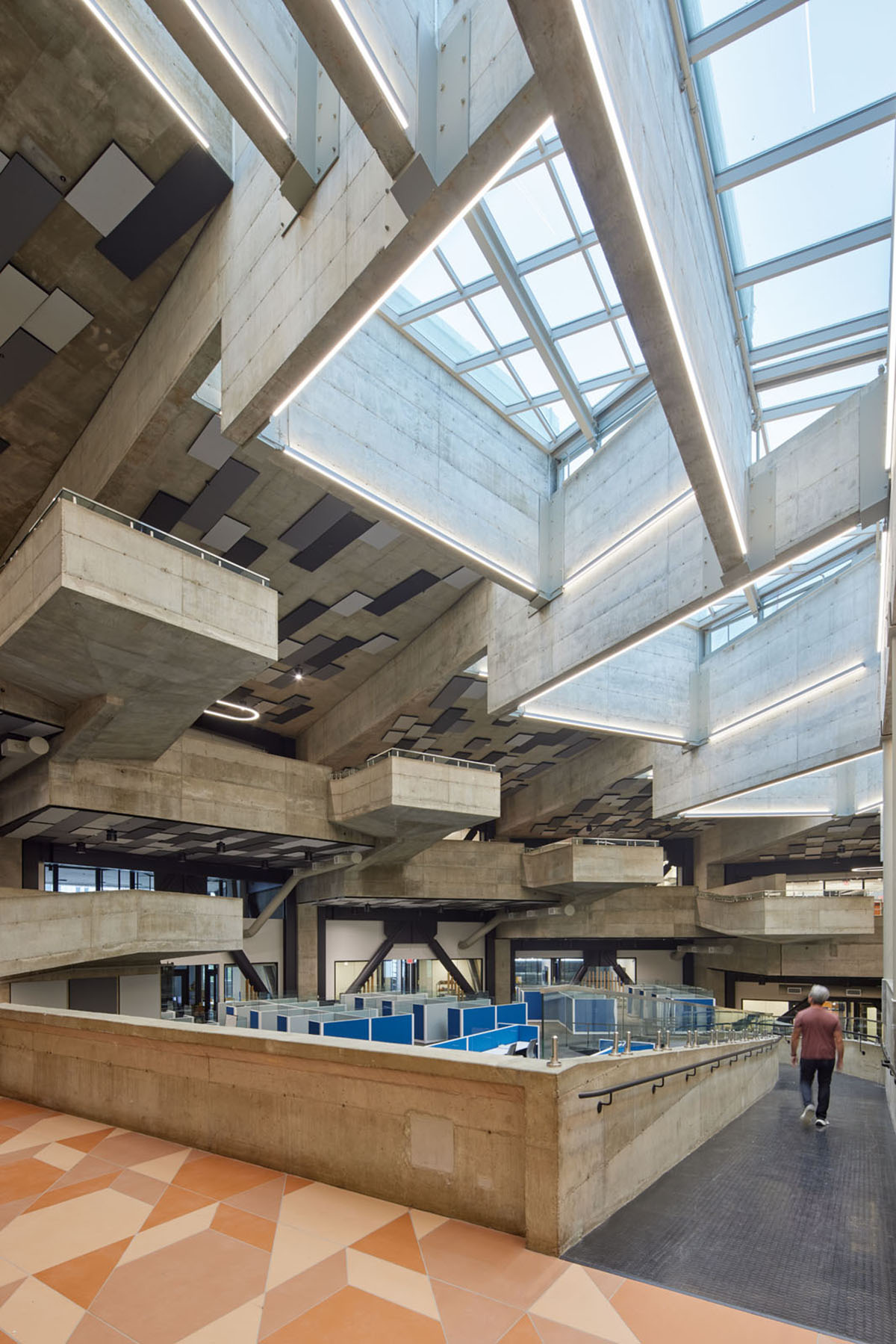
Image © Bruce Damonte
"Because the building is nearly all concrete, including floors, walls, and ceilings, the team was challenged to make all upgrades, including new modern lighting while minimizing the amount of cutting required of the original structure," the team added.
The lighting elements were designed to pay homage to the original lighting design for the art museum. It highlights character-defining features of the building, meets varying light requirements for the variety of space used throughout the building, and is aesthetically cohesive throughout.
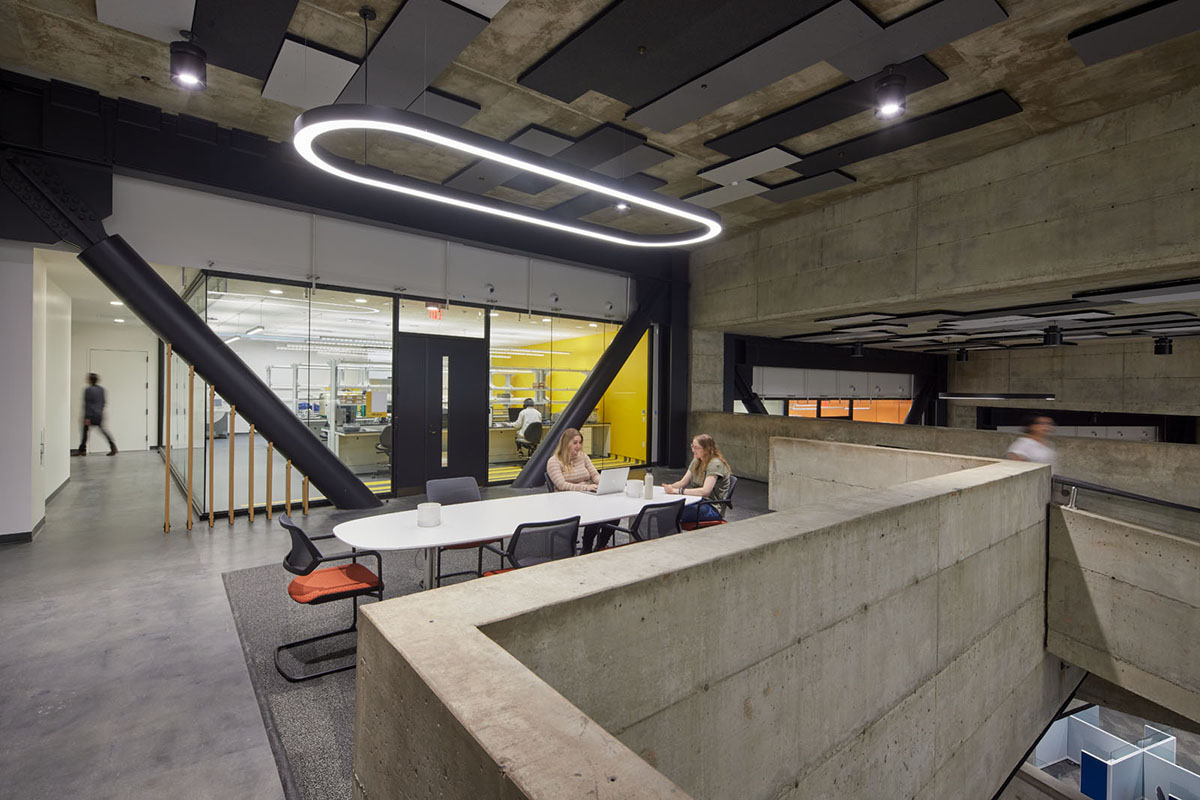
Image © Bruce Damonte
Round luminaires in various sizes and configurations are consistently found throughout the building, wall-washing luminaries with up/down lenses and linear base lighting were added to the cantilevered beams and ramps to accentuate the geometric complexity and grandeur of the building.
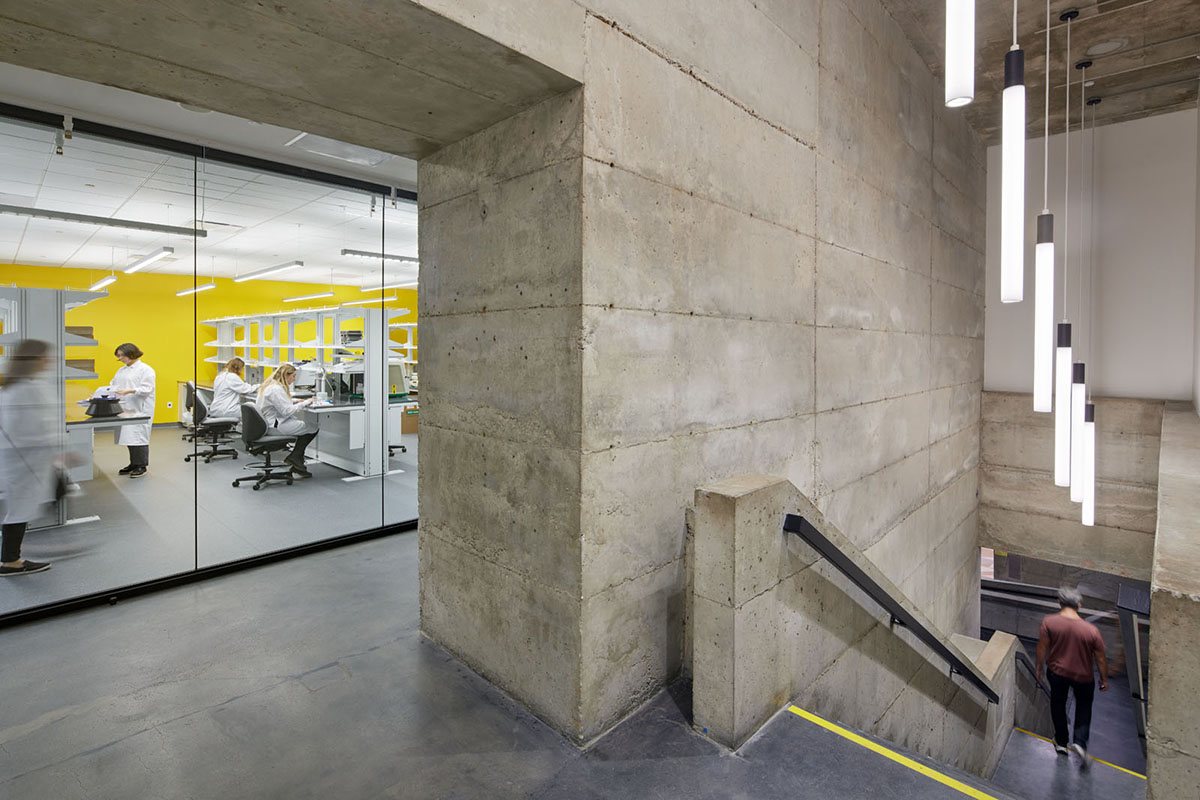
Image © Bruce Damonte
According to the team, there are two new public plazas activating the frontages along Bancroft Way and Durant Avenue, which previously lacked substantial public space.
A landscaped and well-lit public walkway connects the two streets, creating further community interaction with the site.
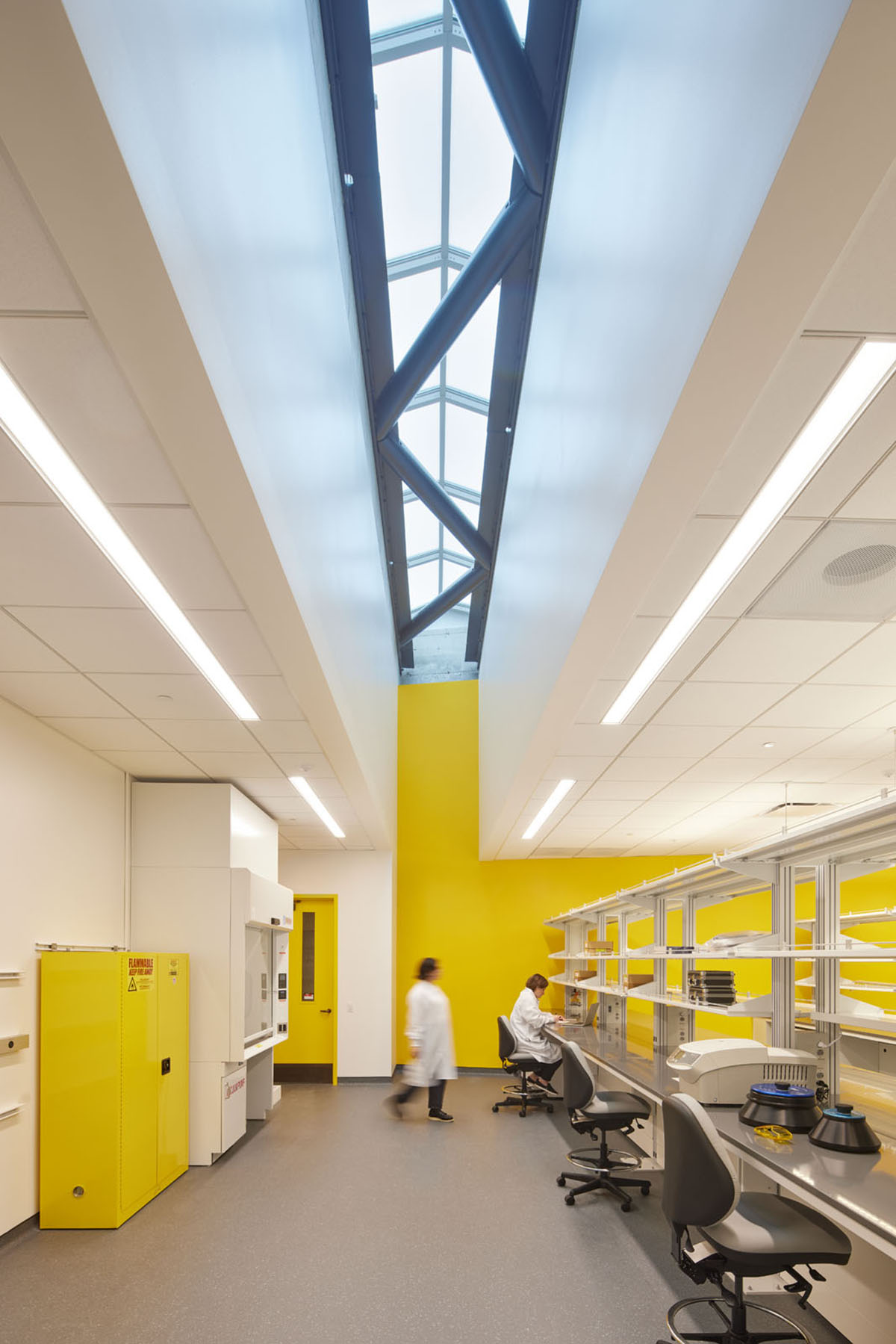
Image © Bruce Damonte

Image © Bruce Damonte
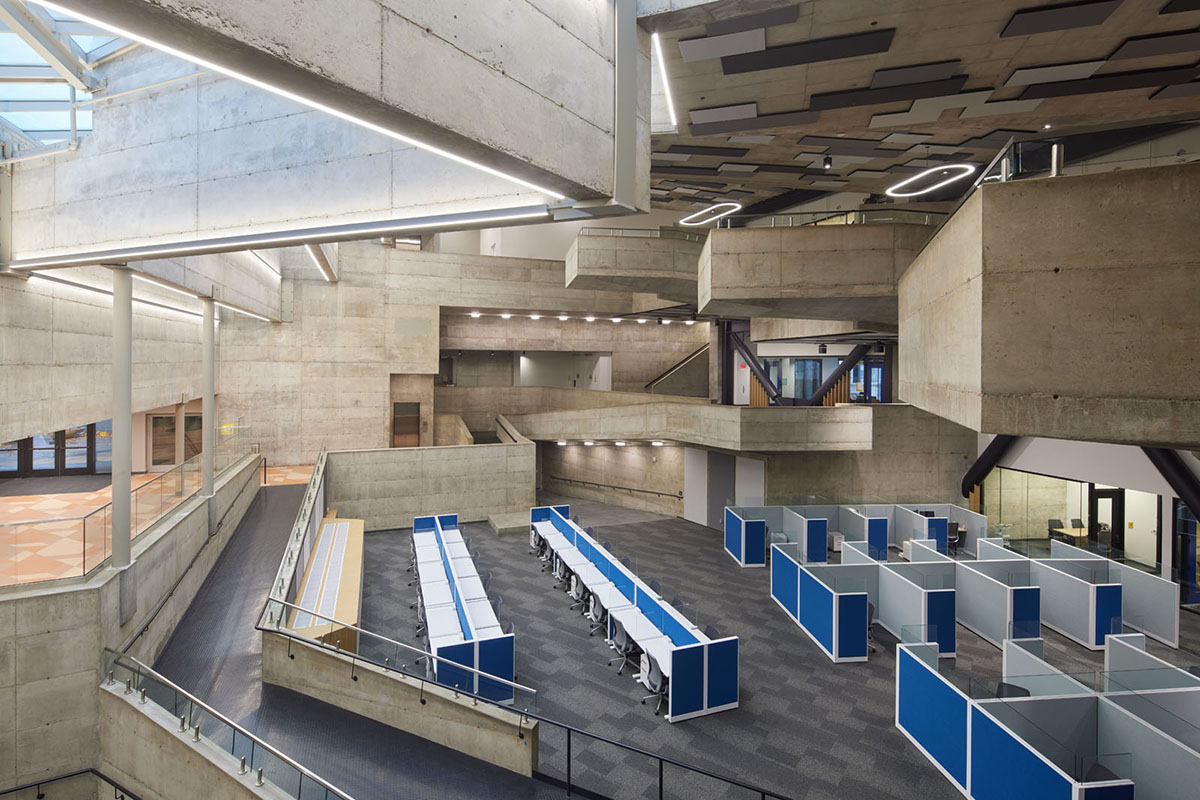
Image © Bruce Damonte
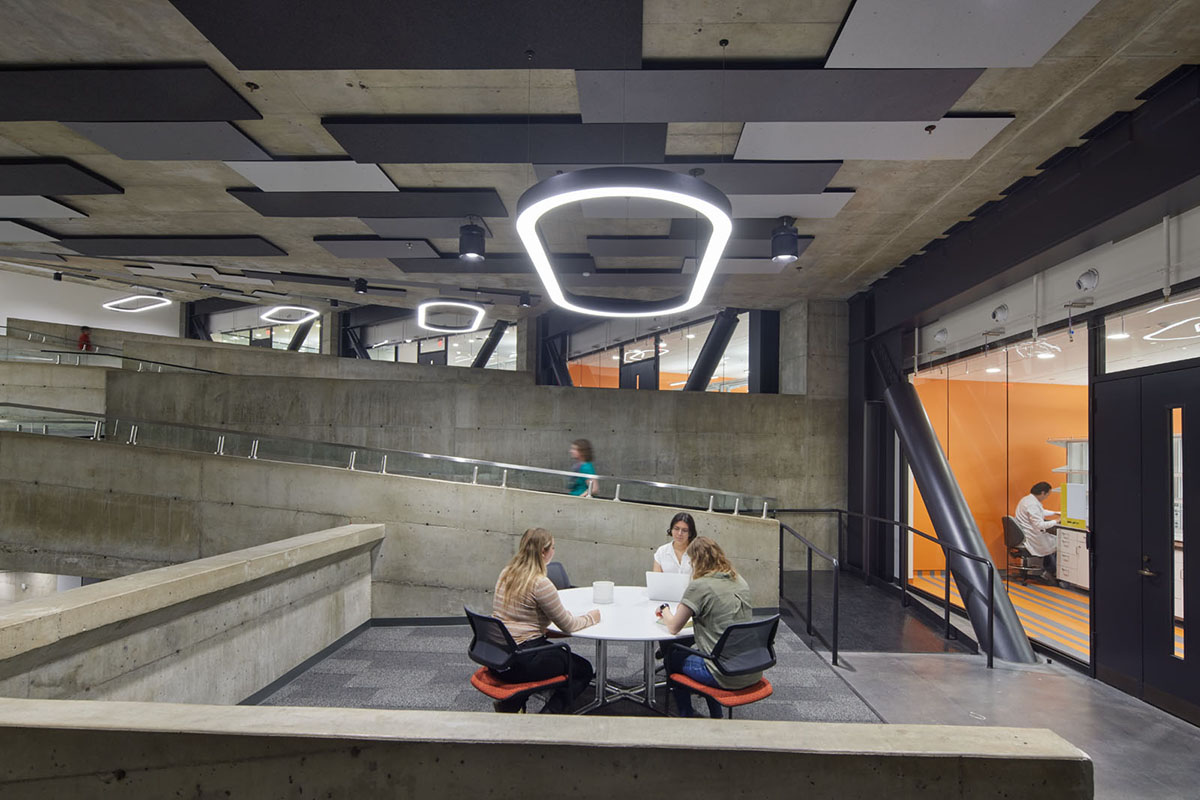
Image © Bruce Damonte
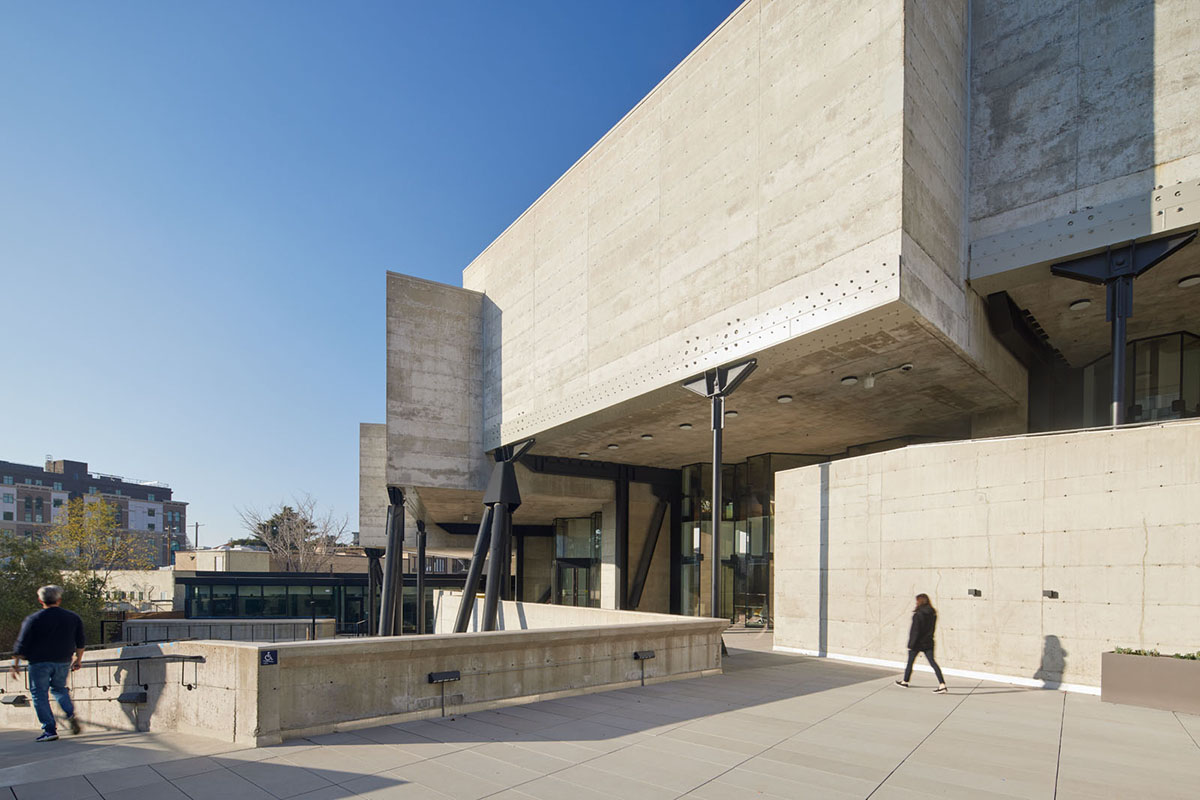
Image © Bruce Damonte
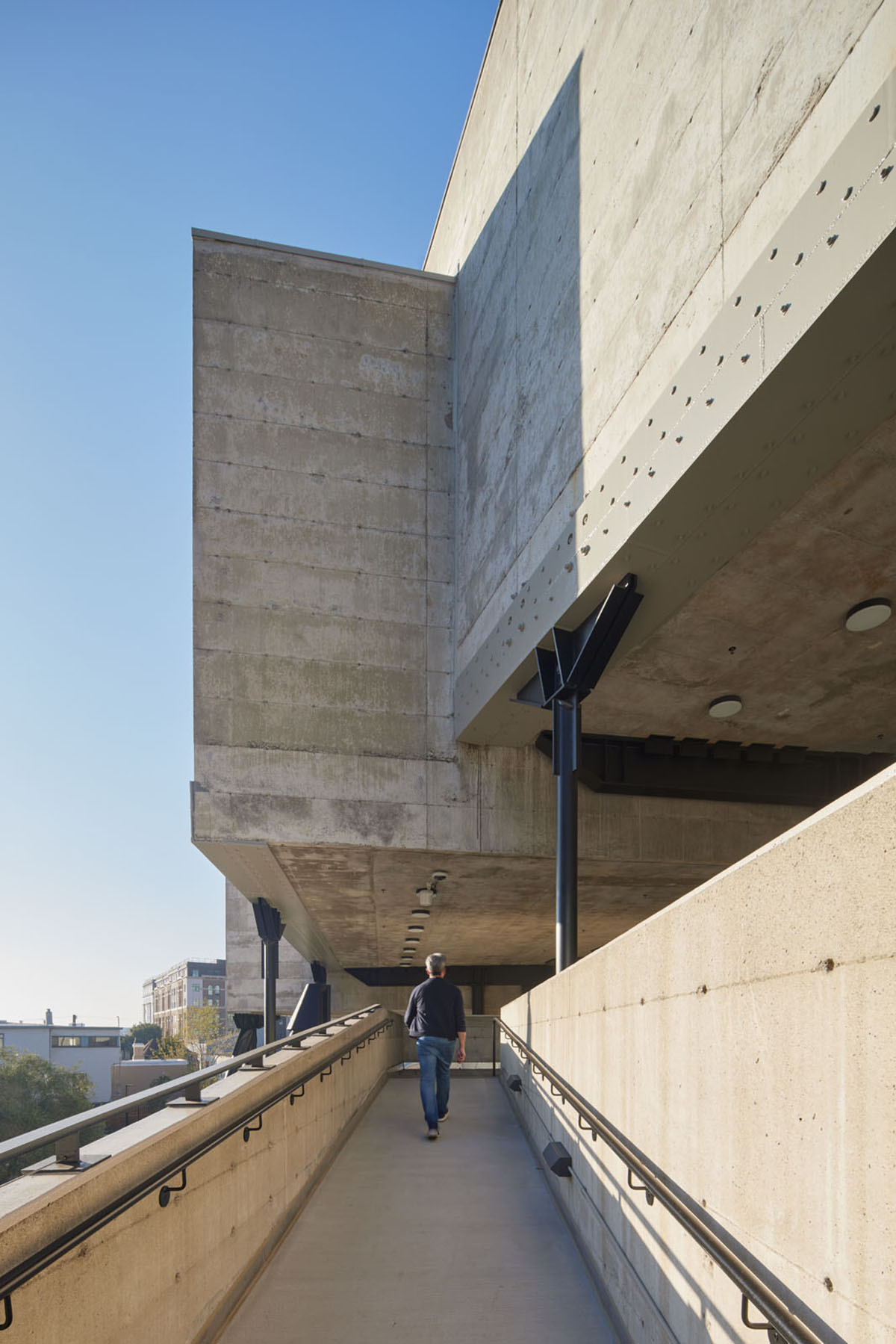
Image © Bruce Damonte
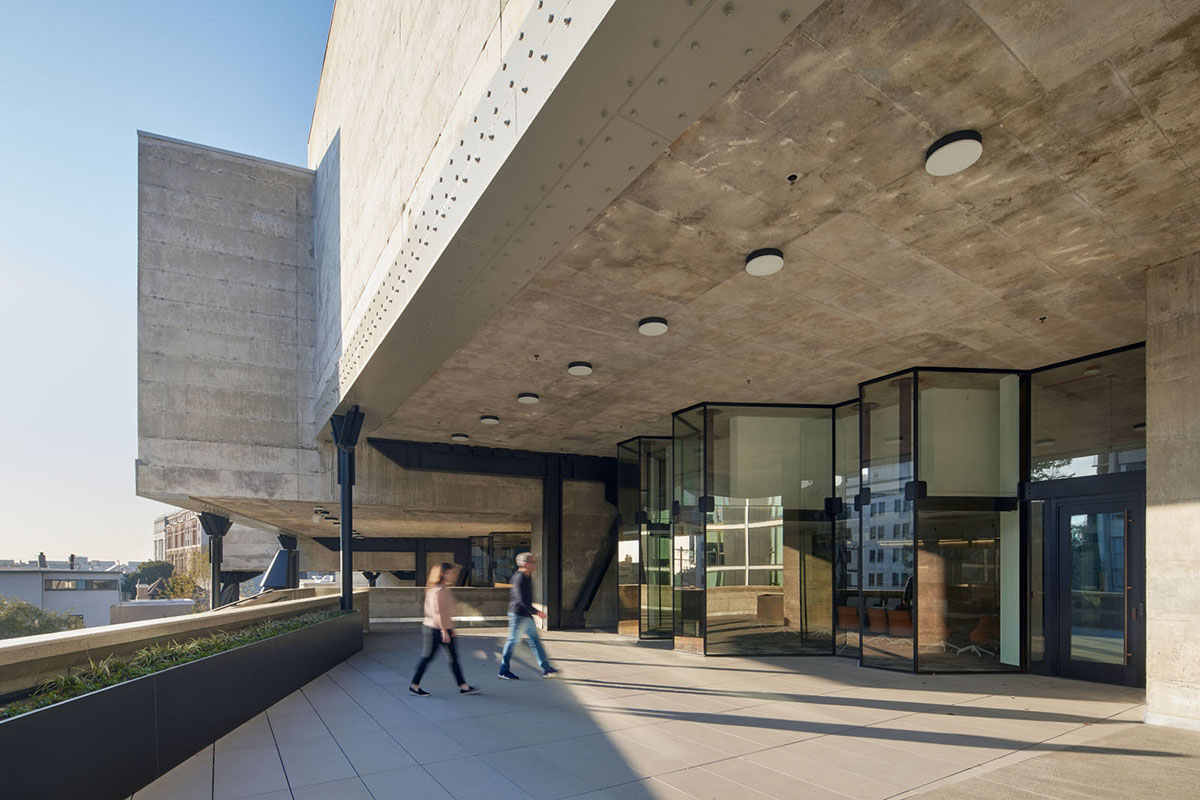
Image © Bruce Damonte
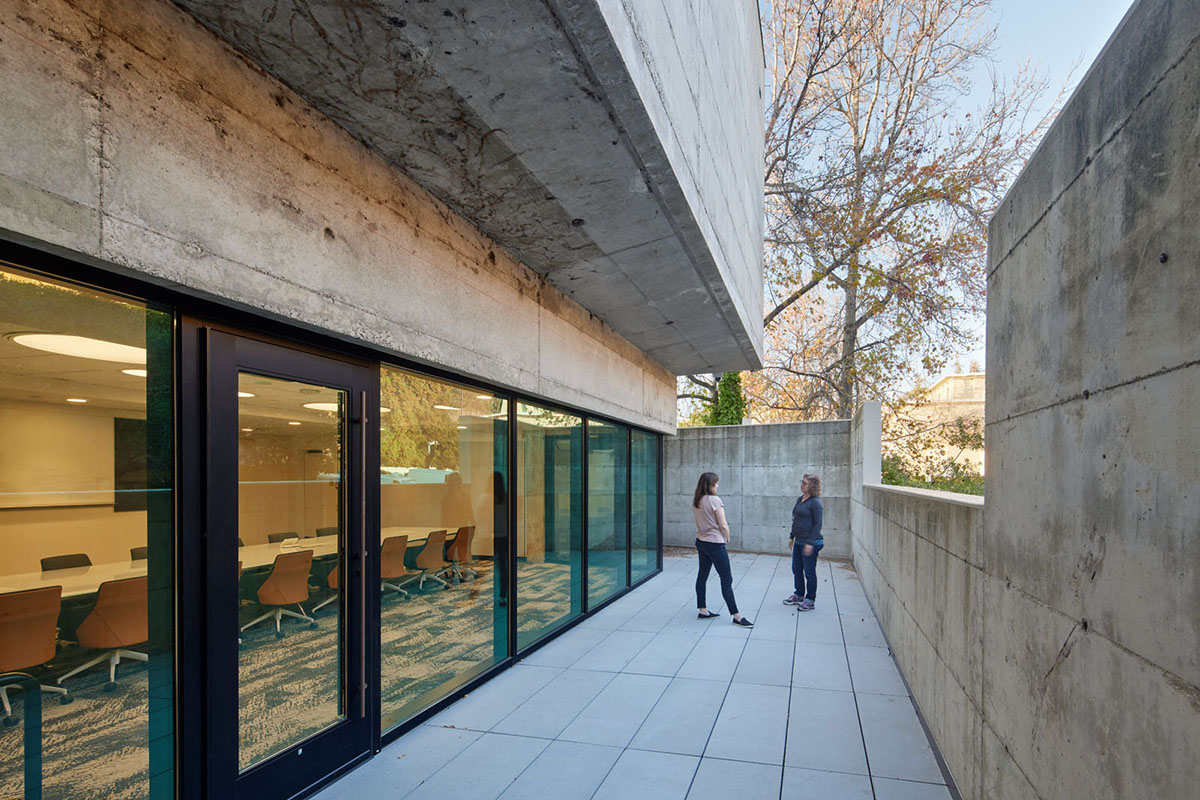
Image © Bruce Damonte
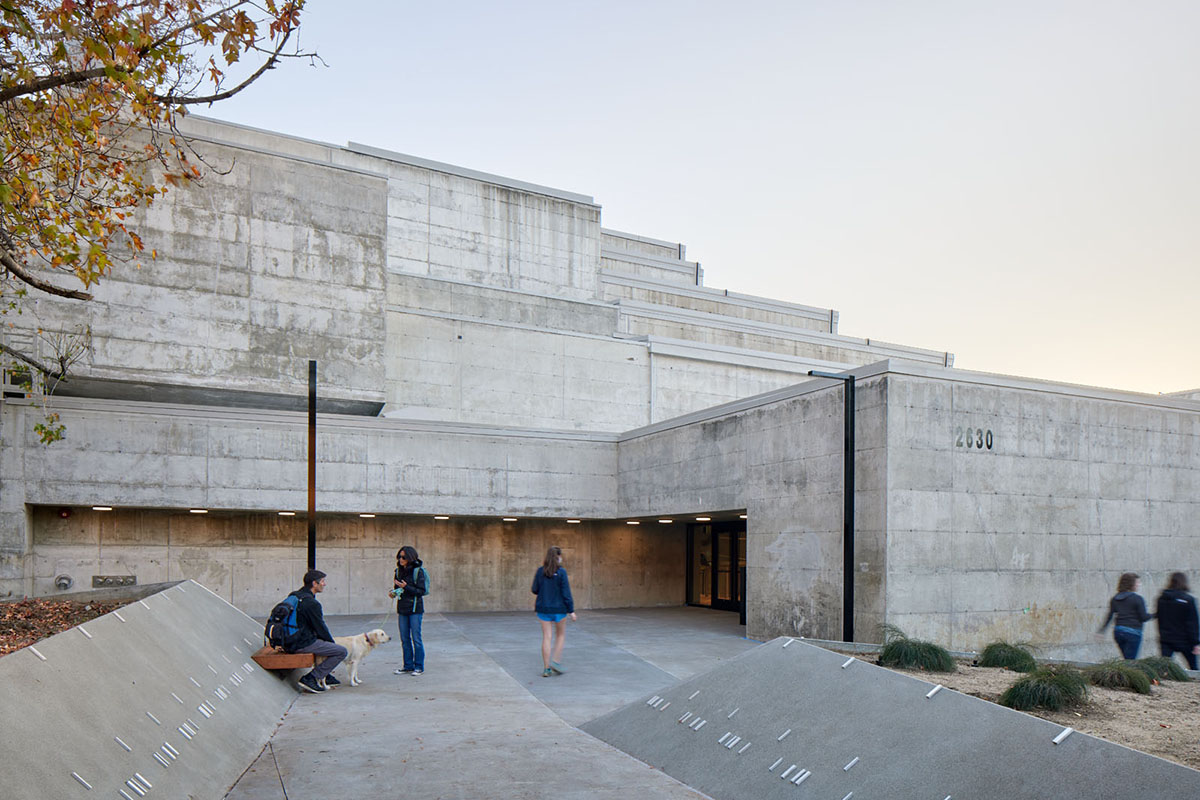
Image © Bruce Damonte
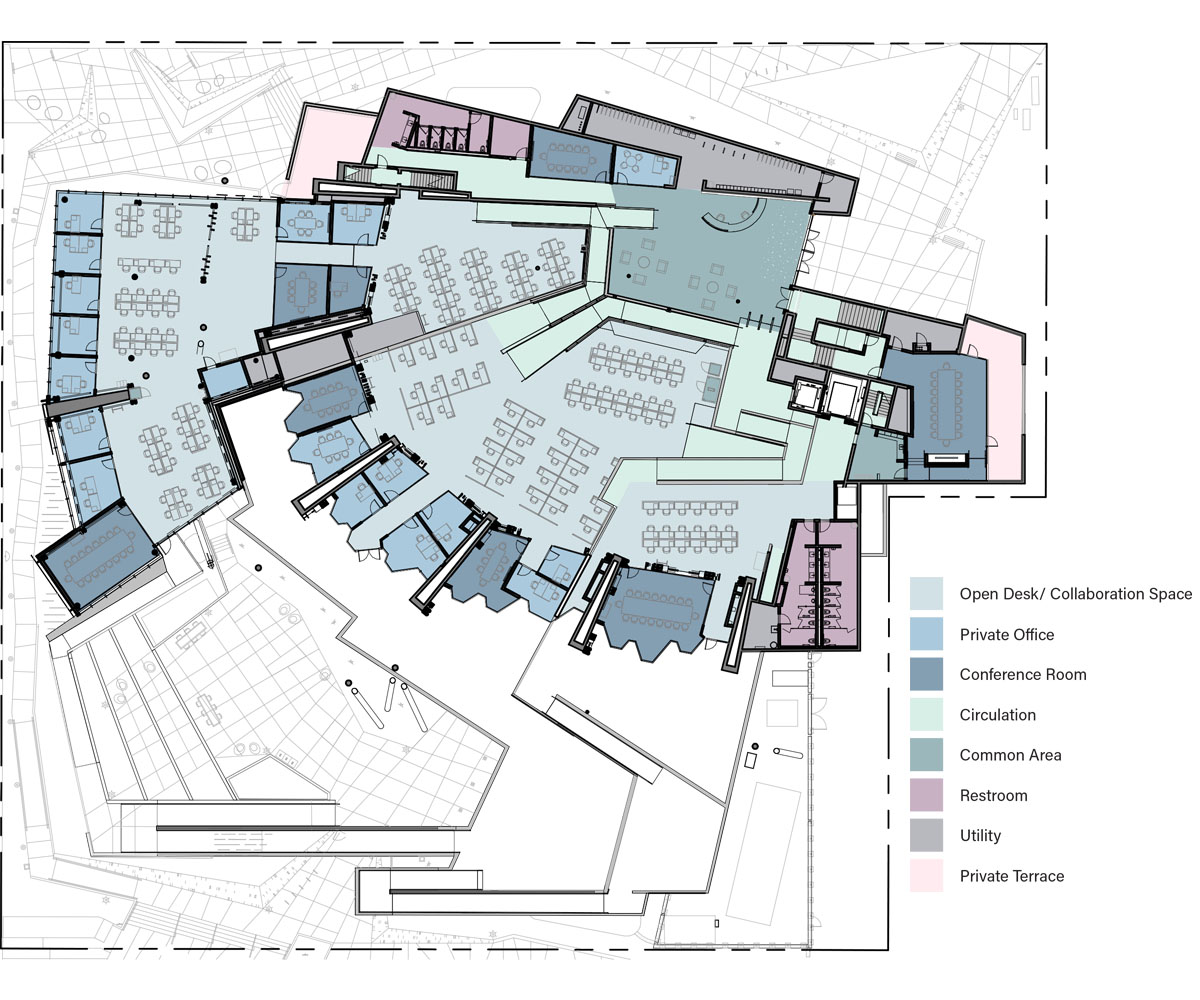
Lower gallery plan
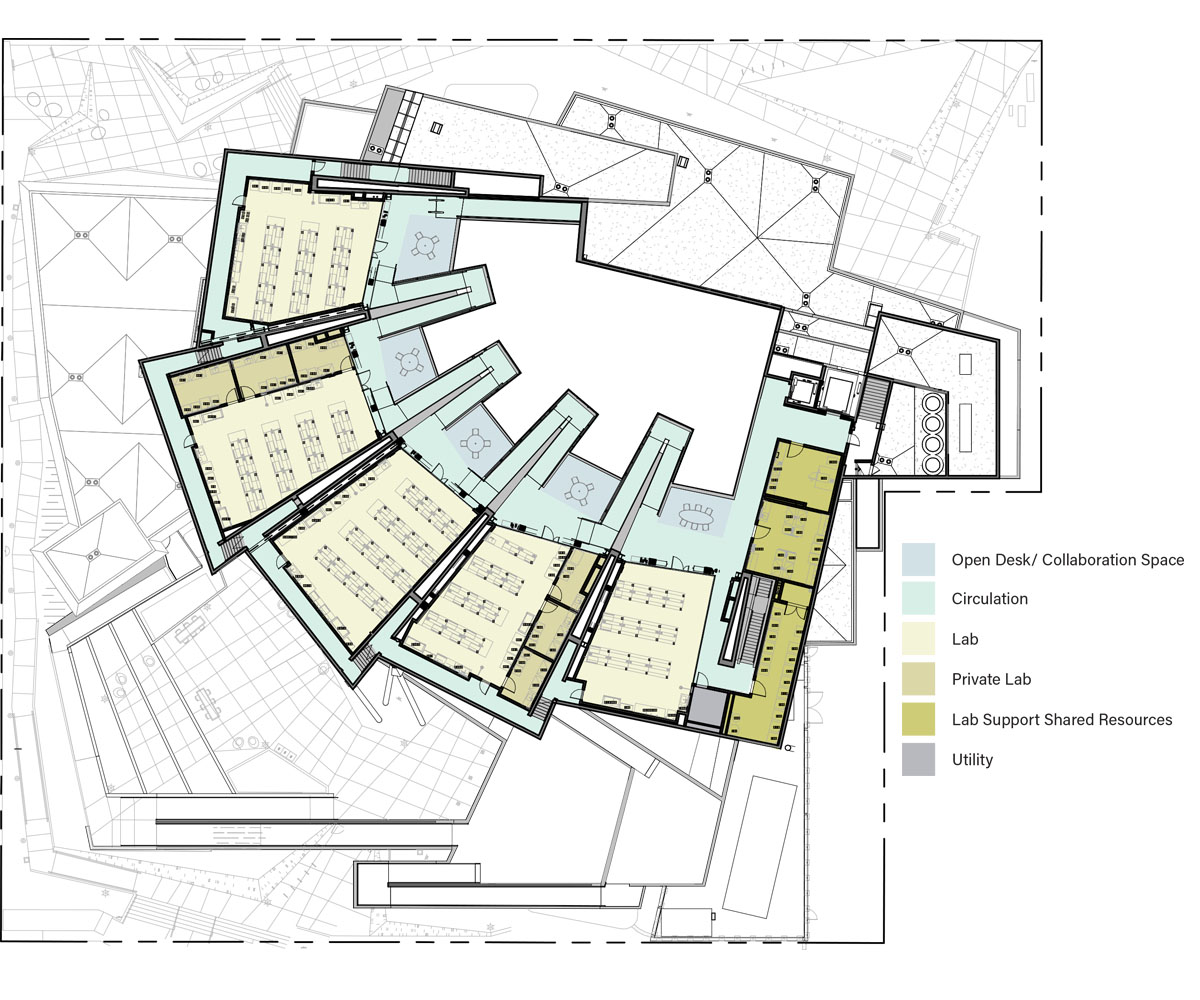
Upper gallery plan
Top image © Cris Gebhardt
All drawings © MBH Architects
> via MBH Architects
